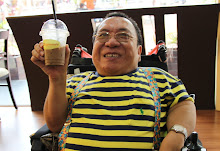Escape
Holy city up on high
David May
551 words
16 September 2007
Sunday Mail, The
2 - State - Main Country
E21
English
Copyright 2007 News Ltd. All Rights Reserved
Lhasa
PERCHED at 3658m in a mountain-fringed valley on the north bank of the Kyichu River, Lhasa is the capital of China's Tibet Autonomous Region.
This mystical city had for centuries been locked in Central Asia on the edge of the Tibetan Plateau, an isolated, almost inaccessible Buddhist "Shangri-la" and seat of the Dalai Lama where devotees on pilgrimages were about the only visitors.
But Lhasa is remote no more. It's now a modern Chinese city of 474,500 people (87 per cent Tibetan) serviced by multimillion-dollar highways and the world's highest railway.
It's a city of wide boulevards, flashing neon, modern shops, restaurants, bars and discos. But towering over it all is the ancient, brooding Potala Palace, an enormous red and white fortress/palace/monastery from where the Dalai Lamas ruled for centuries before the Chinese invasion of Tibet in the 1950s. The city is World Heritage-listed. The present Dalai Lama lives in exile.
Morning
The most obvious starting point is the 7th century Potala Palace, begun in 608 and sitting atop Red Hill at 3700m above sea level.
It contains treasures of Buddhism's finest arts and crafts, temples, chapels, shrines and the gold-plated tombs of eight Dalai Lamas.
About 2km to the east is the ornate Jokhang Temple, the most revered site in Tibet. Outside, thousands of pilgrims arrive daily to prostrate themselves in obeisance and shuffle clockwise around the compound's spinning prayer wheels.
Lunch
Tibetan traditional foods include tsampa (roasted flour), yoghurt and dairy products, momo (spicy yak meat dumplings), beef, mutton and a salty tea made with yak butter.
Small cafes around Tromzikhang Market sell noodles for about four yuan (A65). There are more than 100 restaurants on Deji Lu, Beijing Lu and Barkhor Street, and Western, Indian, Nepalese and Chinese regional foods are easy to find and inexpensive. What you won't find (yet) are Starbucks and McDonald's.
The pizzas, Indian and Nepalese food at Snowlands Restaurant (4 Mentsikhang) are good value.
Try some Tibetan noodles and sweet tea at Guangming Sweet Tea House on Beijing Dong Lu, a dimly lit, atmospheric traditional teahouse.
Afternoon
Norbulingka was once the Dalai Lamas' Summer Palace, set amid 360,000sq m of parks and gardens, open to the public and listed by UNESCO as a World Cultural Heritage Site.
In the southeast corner, the Tibet Museum contains prehistoric Tibetan relics, Buddha statues, colourful "thangkas" (religious paintings and embroideries) and folk handicrafts while the Drepung Monastery contains Buddhist statuary, flowery murals and valuable religious relics.
Shop for thangkas, Tibetan costumes, carpets, antiques, jewellery and gold and silverware at the countless shops on Barkhor Square and its extension, Barkhor Street.
Day trips
Spend a day white-water rafting through dramatic scenery on the Brahmaputra River ( www.highasia .com) or take the 7am scenic bus trip from Jokhang Square to Ganden Monastery built in 1417 and an important pilgrimage site with breathtaking views of the Kyichu River Valley.
Nightlife
Not much really. Most of the bars and clubs are on Beijing Lu and Barkhor Street. Karaoke bars seem to be everywhere while Niuwei (Linkou Bei Lu 13) is a popular Tibetan nightclub.
Subscribe to:
Post Comments (Atom)



No comments:
Post a Comment